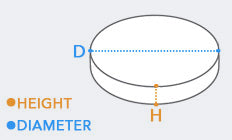Neodymium Disc Magnet - 5mm x 4mm | N50 | Gold
Product code: 20079.5A






Prices are GST Incl.
Volume pricing available on requestAustralia's Leading Supplier
Shipping Worldwide*
30 Day Returns
Same Day Dispatch*

Magnetic Product Description:
This neodymium magnetic disc has a diameter of 5mm and a height of 4mm. It has a magnetic flux reading of 6123 Gauss and a pull force of 0.898 kilos. It is identified by the AMF magnet part number 20079.5A
Gold coated magnets are still susceptible to rust when exposed to the elements or damage from their environment. If you need to ensure that your gold magnet does not rust, you may want to consider applying a sealant which will extend the lifespan of the coating, but may reduce the pull force.
No FAQ available

Magnetic Product Description:
This neodymium magnetic disc has a diameter of 5mm and a height of 4mm. It has a magnetic flux reading of 6123 Gauss and a pull force of 0.898 kilos. It is identified by the AMF magnet part number 20079.5A
Gold coated magnets are still susceptible to rust when exposed to the elements or damage from their environment. If you need to ensure that your gold magnet does not rust, you may want to consider applying a sealant which will extend the lifespan of the coating, but may reduce the pull force.
No FAQ available






